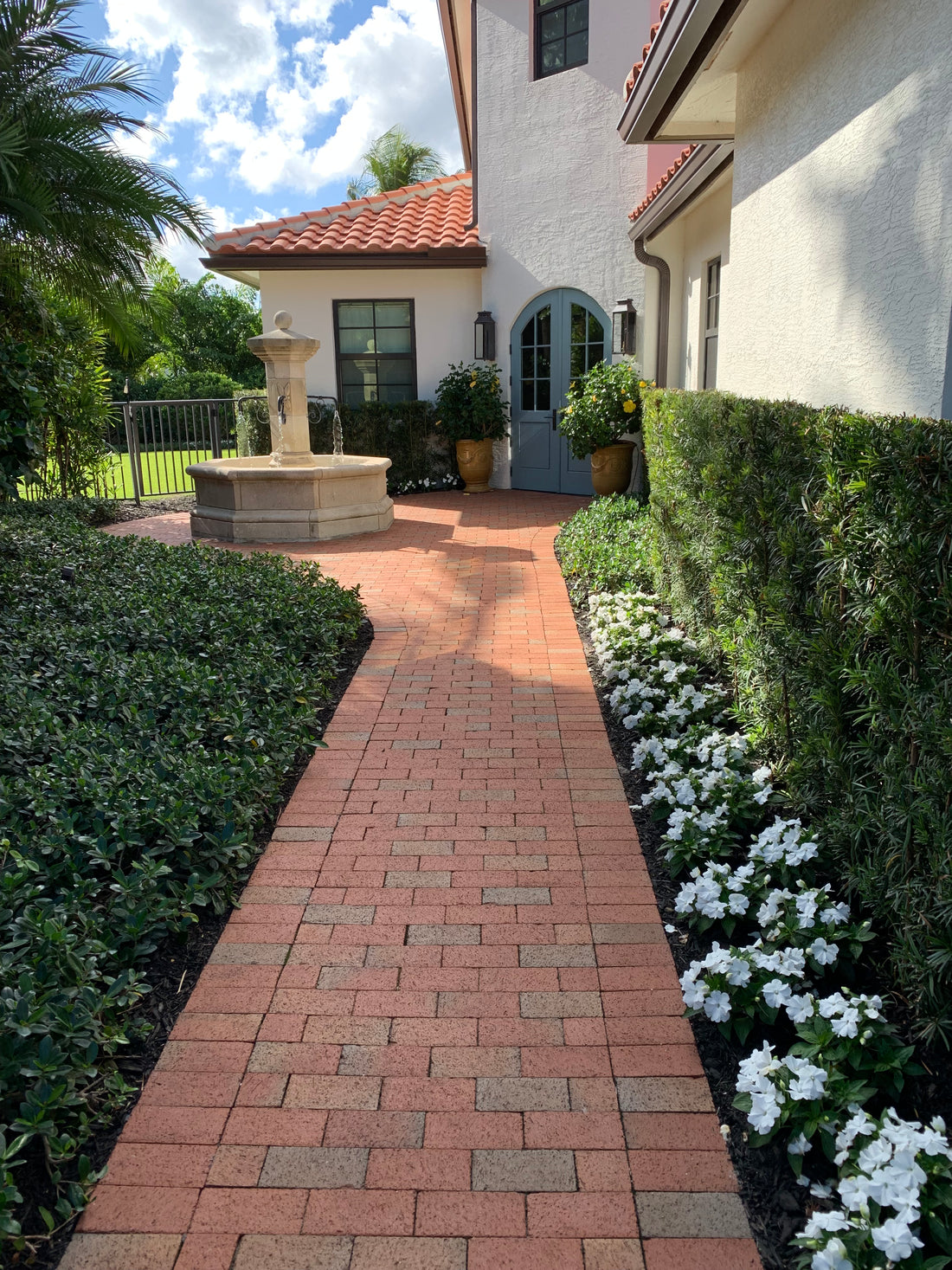
Landscape Design
Share
Landscaping in South Florida offers unique opportunities and challenges due to its tropical climate, coastal conditions, and periods of intense heat and humidity. Here are some design tips to help you create a beautiful and sustainable landscape in this region:
Plant Selection
1. Native Plants: When possible Use South Florida native plants that are well-adapted to the local climate. Examples include Firebush, Coontie, and various species of native grasses.
2. Tropical Plants: Incorporate tropical plants like Hibiscus, Bougainvillea, Bird of Paradise, and Crotons for vibrant color and texture.
3. Salt-tolerant Plants: For coastal areas, choose salt-tolerant plants such as Sea Grape, Silver Buttonwood, and Beach Sunflower.
4. Drought-tolerant Choices: Opt for drought-tolerant plants like Fakahatchee Grass Agaves, and Muhly Grass to reduce water consumption.
Design Elements
1. Palm Trees: Embrace a variety of palms like
2. Shade Structures: Integrate pergolas, trellises, or large umbrellas to provide shaded areas, which are essential for protection from the intense sun and creating outdoor living spaces.
3. Water Features: Consider adding fountains, ponds, or small waterfalls to create a serene environment and help cool the air.
4. Outdoor Lighting: Landscape lighting enhances safety and aesthetics. Use LED lights to illuminate pathways, highlight key features, and extend the usability of your outdoor space into the evening.
Functional Spaces
1. Outdoor Living Areas: Design functional outdoor spaces such as patios, decks, or gazebos for relaxation and entertainment. Use durable materials like concrete, pavers, or weather-resistant wood.
2. Swimming Pools: A pool is a great addition in South Florida. Surround it with non-slippery, heat-resistant materials and lush, tropical plantings for a resort-like feel.
3. Pathways and Walkways: Create meandering paths with native stone or permeable pavers to guide guests through different areas of the garden.
Maintenance and Sustainability
1. Irrigation System: Install an efficient irrigation system, preferably drip irrigation, to minimize water usage. Consider using rain sensors or smart irrigation controllers.
2. Mulching: Use organic mulch to retain moisture, suppress weeds, and improve soil health.
3. Fertilization and Pest Control: Opt for organic fertilizers and integrated pest management practices to promote a healthy ecosystem.
4. Green Lawn Alternatives: Reduce lawn areas and replace them with ground covers, low-maintenance grasses, like Liriope or Jasmine Min to minimize water and maintenance needs.
Climate Considerations
1. Hurricane Preparedness: Choose wind-resistant plants and trees. Design your landscaping to minimize damage from storms, such as planting trees away from structures.
2. Heat and Humidity: Select plants that can withstand high humidity and temperatures. Ensure adequate airflow around plantings to prevent diseases related to excess moisture.
By carefully selecting plants, thoughtfully designing functional spaces, and considering maintenance and sustainability, you can create a stunning and resilient landscape that thrives in South Florida’s unique climate.
Plant Selection
1. Native Plants: When possible Use South Florida native plants that are well-adapted to the local climate. Examples include Firebush, Coontie, and various species of native grasses.
2. Tropical Plants: Incorporate tropical plants like Hibiscus, Bougainvillea, Bird of Paradise, and Crotons for vibrant color and texture.
3. Salt-tolerant Plants: For coastal areas, choose salt-tolerant plants such as Sea Grape, Silver Buttonwood, and Beach Sunflower.
4. Drought-tolerant Choices: Opt for drought-tolerant plants like Fakahatchee Grass Agaves, and Muhly Grass to reduce water consumption.
Design Elements
1. Palm Trees: Embrace a variety of palms like
2. Shade Structures: Integrate pergolas, trellises, or large umbrellas to provide shaded areas, which are essential for protection from the intense sun and creating outdoor living spaces.
3. Water Features: Consider adding fountains, ponds, or small waterfalls to create a serene environment and help cool the air.
4. Outdoor Lighting: Landscape lighting enhances safety and aesthetics. Use LED lights to illuminate pathways, highlight key features, and extend the usability of your outdoor space into the evening.
Functional Spaces
1. Outdoor Living Areas: Design functional outdoor spaces such as patios, decks, or gazebos for relaxation and entertainment. Use durable materials like concrete, pavers, or weather-resistant wood.
2. Swimming Pools: A pool is a great addition in South Florida. Surround it with non-slippery, heat-resistant materials and lush, tropical plantings for a resort-like feel.
3. Pathways and Walkways: Create meandering paths with native stone or permeable pavers to guide guests through different areas of the garden.
Maintenance and Sustainability
1. Irrigation System: Install an efficient irrigation system, preferably drip irrigation, to minimize water usage. Consider using rain sensors or smart irrigation controllers.
2. Mulching: Use organic mulch to retain moisture, suppress weeds, and improve soil health.
3. Fertilization and Pest Control: Opt for organic fertilizers and integrated pest management practices to promote a healthy ecosystem.
4. Green Lawn Alternatives: Reduce lawn areas and replace them with ground covers, low-maintenance grasses, like Liriope or Jasmine Min to minimize water and maintenance needs.
Climate Considerations
1. Hurricane Preparedness: Choose wind-resistant plants and trees. Design your landscaping to minimize damage from storms, such as planting trees away from structures.
2. Heat and Humidity: Select plants that can withstand high humidity and temperatures. Ensure adequate airflow around plantings to prevent diseases related to excess moisture.
By carefully selecting plants, thoughtfully designing functional spaces, and considering maintenance and sustainability, you can create a stunning and resilient landscape that thrives in South Florida’s unique climate.
